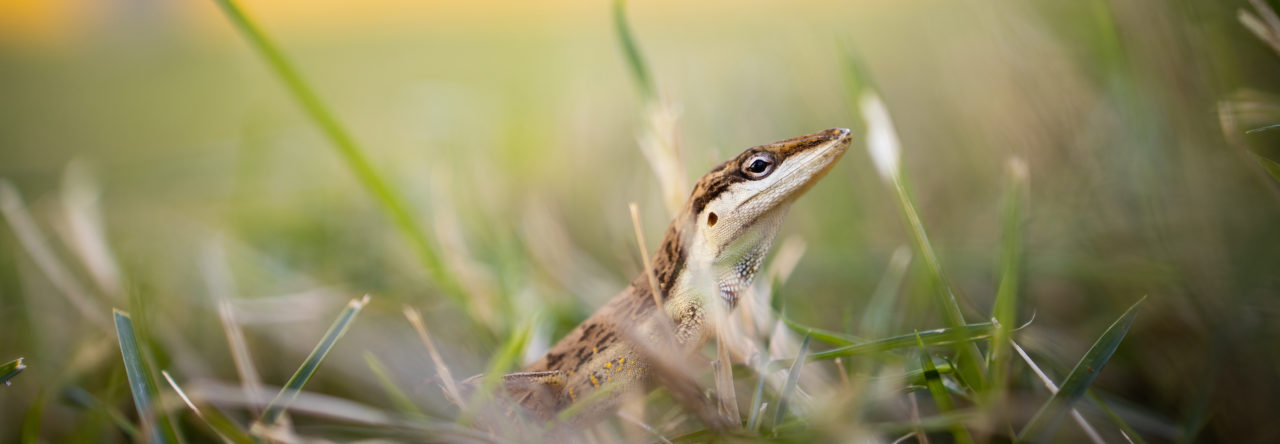These pages have chronicled the appearance of the brown anole (Anolis sagrei) in farflung places around the globe, including throughout the Caribbean, Hawaii, Costa Rica, and Taiwan, among others. A new paper in Nature in Singapore reports a first: an established population in mainland Asia, in Singapore. The site of the invasion, and apparently for now the only locality for the population, is a new park, Gardens by the Bay. As Wikipedia reports, Gardens by the Bay is “an integral part of a strategy by the Singapore government to transform Singapore from a “Garden City” to a ‘City in a Garden’. The stated aim is to raise the quality of life by enhancing greenery and flora in the city.” Like many invasive anole populations, this one probably was founded by stowaway lizards or eggs transported in potted plants, but this is just conjecture.
As a sidenote, as far as I am aware, this paper is the first to implement the new Nicholson et al. anole classification, explicitly citing the paper as rationale for referring to the species as Norops sagrei.
- Evolution in Real Time on Lizard Island - March 23, 2025
- Spider Snags Adult Anolis osa - March 22, 2025
- An Homage to the Green Anoles of New Orleans - March 21, 2025



Yoel Stuart
From the pictures, it seems there’s a fair amount of orange on both body and dewlap in this population. I wonder where the park got its plants from and how big the initial propagule was.
Pat
@ Yoel Stuart: “I wonder where the park got its plants from and how big the initial propagule was.”
The climate-controlled Gardens By The Bay procures its plants from all over the world — from lowland tropics and cloud forests, to savannah plains, Mediterranean shrubland and temperate plains. In fact, its CEO described the place as a theme park based on plants. The only flora not showcased are those from the Antarctic & alpine regions.
As Gardens By The Bay is a park engineered with “instant plants” in mind, the sourced plants are mostly sizable ones, consisting of transplanted mature trees — including a number of Adansonia digitata (Baobab) which were trenched out from Senegal & are so huge that they can only be transported on open flatbed trailers — as well as mature shrubs, climbers & epiphytes. The park does import exotic seeds, but in small quantities for trial-growing purposes inside its nursery.
In addition, the park imported tonnes of instant hardscape features like large decorative trunks, rocks, etc. Even the reclaimed land on which the park is built is completely imported in the form of dredged sand.
The park has thousands of bromeliads (check out the clothed “trunks” of the metal “Supertrees”), as well as other plants imported from the tropical Americas. This might be a possible channel that allowed the Brown Anole to slip into Singapore.
Martha Munoz
Anolis sagrei never fails to impress with its ability to spread far and wide. Beyond the possible ecological interactions, I wonder if all these anole invasions are accompanied by the introduction of novel pathogens and if there are consequences we do not yet see.
Gregory C. Mayer
Singapore is an island, so they haven’t quite made it to the main yet.
Gregory Mayer
But soon, I’m sure!
Magda
On my last visit to Singapore (December 2012), I saw an anole on a tree along the riverbank near Robertson Quay – so they seem to have spread further than the Gardens by the Bay park already!
Matthias
In 2021 I have seen them in the mentioned area, plus one tiny red headed population 3km away.